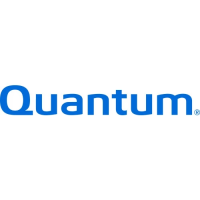Section 5
SCSI Programming Guidelines
5.5
SCSI POINTERS
Consider the system shown
in
Figure 5-3 in which an initiator and target communicate on the SCSI bus to
execute a command.
Initiator
Target
Function
Path Path
Function
Origin
Control
SCSI Bus
Control
Execution
Initiator Target
FIGURE
5-3 Simplified
SCSI
System
The SCSI architecture provides for two sets
of
three pointers within each initiator. The pointers reside in
the initiator path control. The first set
of
pointers are the current (or active) pointers. These pointers are
used
to
represent the state
of
the interface and point to the next command, data,
or
status byte to be
transferred between the initiator's memory and the target. There
is
only one set
of
current pointers in each
initiator. The current pointers are used by the target currently connected to the initiator.
The second set
of
pointers are the saved pointers. There is one set
of
saved pointers for each command that
is
currently active (whether
or
not it is currently connected). The saved command pointer always points to
the start
of
the command descriptor block for the current command. (See Section 5.7.1.) The saved status
pointer always points to the start
of
the status area for the current command. At the beginning
of
each
command, the saved data pointer points to the start
of
the data area.
It
remains at this value until the target
sends a SA
VE DATA POINTER message (5.6.2) to the initiator. In response to this message, the initiator
stores the value
of
the current data pointer into the saved data pointer. The target may restore the current
pointers to
their saved values by sending a RESTORE POINTERS message (5.6.2) to the initiator. The
initiator moves the saved value
of
each pointer into the corresponding current pointer. Whenever a device
disconnects from the SCSI bus, only the saved pointer values are retained. The current pointer values are
restored from the saved values upon the next reconnection.
NOTE:
On a READ,
if
the ProDrive disconnects before any data is transferred, the SA VE DATA
POINTER message is not issued. Similarly, on a WRITE,
if
the drive disconnects after all data
have been transferred, the SA VE DATA POINTER message is not issued.
5.6
MESSAGE SYSTEM SPECIFICATION
The message system allows communication between an initiator and target for the purpose
of
physical data
path management.
5.6.1
MESSAGE PROTOCOL
The
ProDrive requires ariy SCSI device it communicates with to be able to receive and understand the
COMMAND COMPLETE message. This is the only message an initiator communicating with the
ProDrive is required to implement.
To
maximize flexibility, the ProD rive also supports all single byte
(non-extended) messages defined in the ANSI SCSI Specification. The
ProDrive will not send any
message other than
COMMAND COMPLETE until
it
is informed by the initiator that it can support other
messages. The initiator does this in the
SELECfION
phase by asserting A
TN
prior to the SCSI bus
condition
of
SEL
true and
BSY
false. This informs the ProDrive that the initiator can at least generate a
MESSAGE REJECT message
if
it does not understand a message from the ProDrive.
If
the ProDrive detects the A
TN
signal asserted during SELECTION phase, it will enter MESSAGE
OUT
phase and take a message byte from the initiator. The ProDrive expects an IDENTIFY message at
SCSI
Programming
Guidelines
5·
9

